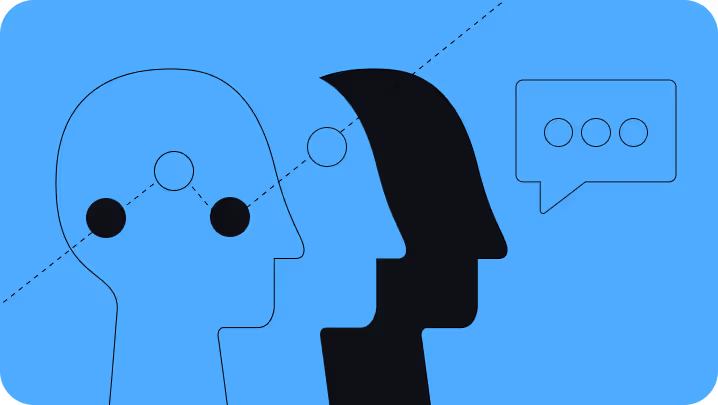The first day of school brings a lot of familiar scenes: buses rumbling down tree-lined streets, parents snapping photos of kids in crisp uniforms, and school admissions and marcom teams frantically fielding the same questions for the hundredth time. "Where's the carpool line?" "What time does soccer practice start?" "Did we submit our lunch forms?"
For private and independent schools, the back-to-school season represents more than administrative logistics. It’s both a brand moment and a critical opportunity to strengthen the trust-based relationships that define your community. Private and independent schools are known for personal connections, tailored experiences, and the kind of individualized attention that makes parents choose you year after year.
The challenge is, as families expect personalized experiences, delivering tailored communication at scale can feel impossible for already stretched teams. Enter artificial intelligence—not as a replacement for your human touch, but as a powerful amplifier that can help you connect with every family in meaningful, efficient ways.
We're about to explore how AI tools, particularly platforms like Halda, can transform your back-to-school communications from generic mass messages into personalized experiences that increase engagement, simplify enrollment, and strengthen your school's brand reputation.
Personalization is More than a Buzzword
Private and independent schools thrive on relationships. Parents don't just want updates—they expect conversations. They’re not interested in generic emails—they want messages that reflect their child’s grade, interests, and family situation.
This expectation creates a communication paradox. Traditional approaches often fall short in three critical areas:
The One-Size-Fits-All Trap: Mass emails announcing "back-to-school information" land in inboxes alongside 47 other messages. A kindergarten parent doesn't need high school AP course updates, and a returning family doesn't need the same orientation details as newcomers.
Context Blindness: Your communication system doesn't know that the Johnson family has been asking about after-school care options, or that the Smiths are still missing their health forms. Generic reminders feel impersonal and often, irrelevant.
Resource Limitations: There are only so many hours in a week to manage communications for hundreds of families. Creating personalized messages for every scenario just isn't sustainable with many current tools.
These communication gaps are more than an inconveneince—they can really hurt relationships. When families get irrelevant or poorly-timed messages, trust takes a hit. Parents start to wonder if the school really gets them, and prospective families may feel like just another number, impacting enrollment.
On the flip side, schools that nail personalized communication see amazing results. Parents feel more satisfied when a school shows it understands their unique situations. And most importantly, families feel a stronger connection to the school community when they feel seen and heard.
AI-Powered Use Cases That Actually Work
The great thing about AI in school communications isn’t that it replaces human judgment—it’s that it helps you be more thoughtful and responsive on a bigger scale. Here are five ways it’s changing how schools stay connected with families:
Tailored Welcome Messages
Imagine using AI to create personalized welcome messages for every student. A new fifth-grader gets info about middle school transition support and peer mentorship programs. A kindergartner’s family hears about their familiar teacher, classroom routines, and even the latest playground rules.
The AI pulls from enrollment data, past communications, and family engagement to create messages that feel like they were written just for them. As a result, parents feel seen and appreciated, kicking off the school year on the right foot.
Dynamic FAQs and Smart Responses
Back-to-school season always comes with a flood of questions, but every family’s situation is a little different. That’s where AI-powered agents and smart widgets can step in, offering instant, personalized answers that go beyond a basic FAQ page.
For example, if a parent asks, “Where do I drop off my third grader?” they’ll get directions to the elementary entrance, info about parking, and even the specific drop-off time for their child’s class. A high school parent asking the same thing will get completely different, customized details.
These systems get smarter with every interaction, making them more helpful over time. Families get quick, accurate answers when they need them, and your team saves hours. It’s a win-win.
Enrollment Process Nudges
Every family goes through your enrollment process at their own speed, with their own questions and timeline, and AI can help. It tracks where each family is in the process and sends just the right nudge at the right time, feeling helpful, instead of pushy.
Take the Williams family, for example. They’ve started their application but haven’t submitted their essays yet. They get a friendly reminder and a note about your writing support resources. Meanwhile, the Garcias have signed their enrollment contract but haven’t finished the health forms. They receive a quick message—or text!— with links to the required documents and your nurse’s contact info.
These thoughtful, personalized reminders not only help families complete their steps but also show how much you care about supporting them every step of the way.
Accessible Communications
AI can turn complicated documents into easy-to-read summaries for parents. For example, lengthy enrollment contracts can be turned into clear, simple explanations or policy updates can be condensed into quick highlights that busy parents can actually find time to read.
Personalized Video and Voice Scripts
School leadership videos and phone outreach become exponentially more effective when they’re tailored to specific audience segments. AI can generate scripts that address different family groups’ unique concerns.
Your head of school records one video, but families receive versions with openings customized to their specific situation: returning families hear about exciting program updates, while new families get reassurance about your welcoming community and transition support.
Best Practices for Responsible AI Implementation
Using AI in school communications is exciting, but it comes with responsibilities. Here’s how to use these tools effectively while keeping the trust and authenticity that make your school community unique:
Keep Humans in the Loop: Use AI as your helper, not your autopilot. Every AI-generated message needs a once-over from your team to make sure it matches your school’s voice and values. Think of AI like a super-efficient assistant that’s always ready to crunch data and whip up first drafts for you.
Protect Your School's Voice: AI tools are super handy, but they’re not going to automatically get your school’s unique vibe or how you communicate. Take some time to train them to match your tone, values, and personality. The idea isn’t to let them take over with boring corporate-speak—it’s to help amplify your authentic voice.
Prioritize Privacy and Compliance: Family data is sacred, and it deserves to be handled with care. Make sure your AI tools follow all privacy regulations and your school’s data protection policies. Be upfront with families about how you’re using their information to improve communication, and always give them the option to opt out if they want to.
Embrace Continuous Learning: AI systems get better with feedback and data. Set up simple ways to track how well your communication is working, gather input from families, and tweak your AI outputs as needed. What works for back-to-school updates might need a few changes when admissions season or mid-year announcements roll around.
How Halda Amplifies Your Communication Superpowers
Halda’s AI-powered platform is designed for schools that want to keep their personal touch while improving communication at scale. If you’re ready to upgrade your back-to-school communications strategy, here’s how it can help:
Intelligent Forms: Halda’s AI-powered forms make it easy for families to get quick, relevant answers to their questions—whether they’re asking about tuition, campus tours, or your school’s educational philosophy. Swap out those boring, generic forms for dynamic, personalized ones, and watch your inquiry submissions grow.
Demystify Financial Aid: Make financial aid information more accessible with targeted scholarship calculators and aid assessment tools. Halda can provide personalized estimates for tuition and aid based on family inputs, so families see a realistic picture of affordability.
Tailored Follow-up: Don’t let applications get stuck. If a family starts an application but doesn’t finish, we’ll send them friendly, personalized reminders based on where they left off, making it easy for them to pick up and complete.
Seamless Integration: Halda works with your existing systems, pulling data from your SIS, website analytics, and communication platforms to create a unified view of each family's journey and preferences.
Your Roadmap to AI-Enhanced Communications
Here's a practical roadmap for getting started:
Step 1: Audit Your Current Approach
Take a look at your back-to-school communications timeline. Are there points where families tend to get confused, need extra info, or drop out of the process? Pay attention to the questions your team keeps getting asked—it might reveal some patterns to address!
Step 2: Map Personalization Opportunities
Focus on the key moments where personalized messages can really make an impact. Welcome messages, enrollment reminders, and orientation info are great places to start.
Step 3: Explore AI Solutions
Check out platforms like Halda that really understand what schools need for communication. Find tools that work with your current systems and cover the key features your audit highlighted as must-haves.
Step 4: Start Small and Test
Start with small, targeted campaigns—like new family welcome messages or supply list reminders for returning students. Keep an eye on open rates, engagement, and what families have to say.
Step 5: Scale with Confidence
As you start seeing positive results, keep refining your approach and slowly roll out AI-enhanced communications to more segments of your community and larger groups.
School-Family Connection 2.0
AI isn’t here to replace the personal relationships that make your school unique. It’s here to help you nurture those connections more effectively. When your communication system understands each family’s journey, concerns, and preferences, every interaction becomes a chance to build trust and show your commitment to personalized care.
Schools that start using AI-powered communication now will create stronger communities, increase enrollment, and make life easier for their teams. Families will feel more connected, better informed, and valued every step of the way.
The technology exists. The opportunity is here. The question isn't whether AI will transform school communications—it's whether you'll lead that transformation or follow it.


.avif)

